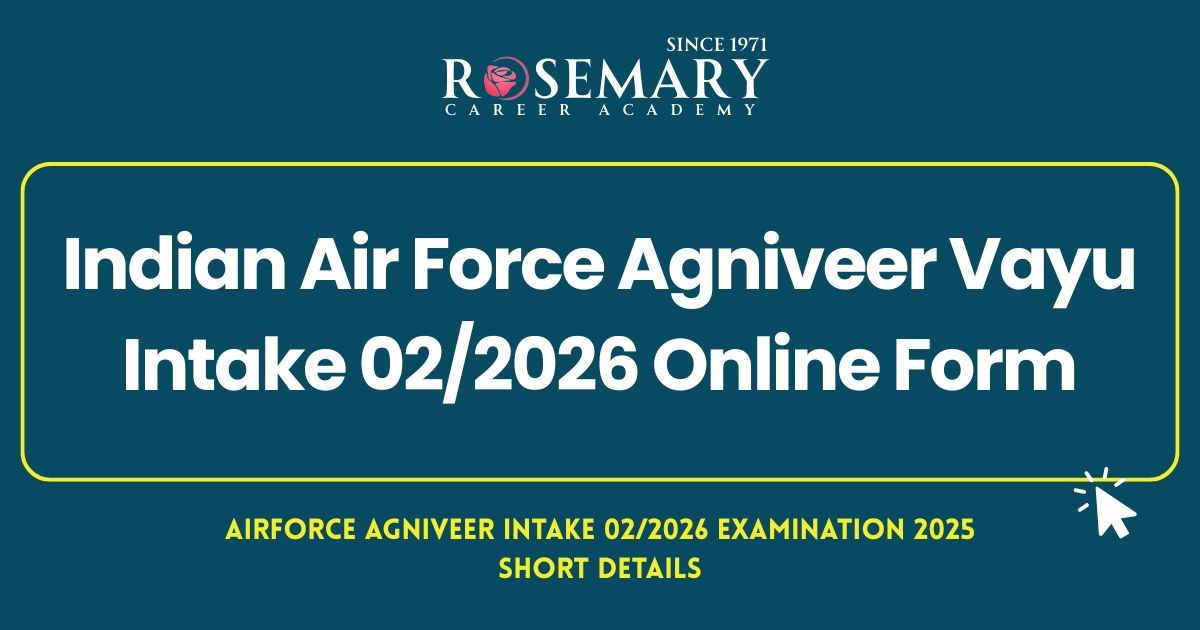JEE Main Syllabus 2026 PDF, Subject-Wise Syllabus and Topics
Get a detailed overview of JEE Main 2026 syllabus, including subject-wise topics for Physics, Chemistry, and Mathematics. Check detailed topics and start preparing for jee main 2026
JEE Main Syllabus 2026: National Testing Agency (NTA) has not yet released the JEE Main syllabus 2026. But the aspirants who are giving the exam can refer to the JEE Main 2025 syllabus and prepare for the exam. JEE Main 2026 syllabus PDF will be uploaded for download on the official website in the near future, and covers Class 11 and 12 Physics, Chemistry, and Mathematics subjects of the NCERT syllabus. The syllabus includes Paper 1 (BE/BTech), Paper 2A (BArch), and Paper 2B (BPlan).

JEE Main Syllabus 2026 for Physics
JEE Main physics Syllabus 2026 will be from NCERT Class 11 and 12 curriculum and is split into two parts: Section A, dealing with theory with a weightage of 80%, and Section B consisting of practical aspects or experimental methods with 20% weightage.
| Units | Topics |
|---|---|
| Units and Measurements | Units of measurements, System of units, SI Units, fundamental and derived units, least count, significant figures, Errors in measurements. Dimensions of Physics quantities, dimensional analysis and its applications. |
| Kinematics | The frame of reference, motion in a straight line, speed and velocity, uniform and non-uniform motion, average speed and instantaneous velocity, uniformly accelerated motion, velocity-time, position-time graph, relations for uniformly accelerated motion, relative velocity. Motion in a plane, projectile motion, uniform circular motion. |
| Laws of Motion | Force and inertia, Newton’s first law of motion, momentum, Newton’s second Law of motion, impulse, Newton’s third Law of motion. Law of conservation of linear momentum and its applications, equilibrium of concurrent forces. Static and Kinetic friction, laws of friction, rolling friction. Dynamics of uniform circular motion, centripetal force and its applications: vehicle on a level circular road, vehicle on a banked road. |
| Work, Energy and Power | Work done by a constant force and a variable force, kinetic and potential energies, work-energy theorem, power. The potential energy of a spring, conservation of mechanical energy, conservative and non-conservative forces, motion in a vertical circle. Elastic and inelastic collisions in one and two dimensions. |
| Rotational Motion | Centre of mass of a two-particle system, centre of mass of a rigid body. Basic concepts of rotational motion, moment of a force, torque, angular momentum, conservation of angular momentum and its applications. The moment of inertia, the radius of gyration, values of moments of inertia for simple geometrical objects, parallel and perpendicular axes theorems and their applications. Equilibrium of rigid bodies, rigid body rotation and equations of rotational motion, comparison of linear and rotational motions. |
| Gravitation | The universal law of gravitation. Acceleration due to gravity and its variation with altitude and depth. Kepler’s law of planetary motion. Gravitational potential energy, gravitational potential. Escape velocity, motion of a satellite, orbital velocity, time period and energy of satellite. |
| Properties of Solids and Liquids | Elastic behaviour, stress-strain relationship, Hooke’s Law, Young’s modulus, bulk modulus and modulus of rigidity. Pressure due to a fluid column, Pascal’s law and its applications, effect of gravity on fluid pressure, viscosity, Stoke’s law, terminal velocity, streamline and turbulent flow, critical velocity, Bernoulli’s principle and its applications. Surface energy and surface tension, angle of contact, excess of pressure across a curved surface, application of surface tension: drops, bubbles and capillary rise. Heat, temperature, thermal expansion, specific heat capacity, calorimetry, change of state, latent heat. Heat transfer: conduction, convection and radiation. |
| Thermodynamics | Thermal equilibrium and the concept of temperature, zeroth law of thermodynamics, heat, work and internal energy. The first law of thermodynamics, isothermal and adiabatic processes. The second law of thermodynamics: reversible and irreversible processes. |
| Kinetic Theory of Gases | Equation of state of a perfect gas, work done on compressing a gas, kinetic theory of gases: assumptions, the concept of pressure, kinetic interpretation of temperature, RMS speed of gas molecules, degrees of freedom, law of equipartition of energy and applications to specific heat capacities of gases, mean free path, Avogadro’s number. |
| Oscillations and Waves | Oscillations and periodic motion: time period, frequency, displacement as a function of time, periodic functions. Simple harmonic motion (S.H.M.) and its equation, phase, oscillations of a spring: restoring force and force constant, energy in S.H.M.: kinetic and potential energies, simple pendulum: derivation of expression for its time period. Wave motion, longitudinal and transverse waves, speed of the travelling wave, displacement relation for a progressive wave, principle of superposition of waves, reflection of waves, standing waves in strings and organ pipes, fundamental mode and harmonics, beats. |
| Electrostatics | Electric charges: conservation of charge, Coulomb’s law forces between two point charges, forces between multiple charges, superposition principle and continuous charge distribution. Electric field: electric field due to a point charge, electric field lines, electric dipole, electric field due to a dipole, torque on a dipole in a uniform electric field. Electric flux, Gauss’s law and its applications to find fields due to infinitely long uniformly charged straight wire, uniformly charged infinite plane sheet and uniformly charged thin spherical shell. Electric potential and its calculation for a point charge, electric dipole and system of charges, potential difference, equipotential surfaces, electrical potential energy of a system of two point charges and of electric dipole in an electrostatic field. Conductors and insulators, dielectrics and electric polarization, capacitors and capacitance, the combination of capacitors in series and parallel and capacitance of a parallel plate capacitor with and without dielectric medium between the plates, energy stored in a capacitor. |
| Current Electricity | Electric current: drift velocity, mobility and their relation with electric current, Ohm’s law, electrical resistance, I-V characteristics of Ohmic and non-ohmic conductors, electrical energy and power, electrical resistivity and conductivity, series and parallel combinations of resistors, temperature dependence of resistance. Internal resistance, potential difference and emf of a cell, a combination of cells in series and parallel. Kirchhoff’s laws and their applications, Wheatstone bridge, Metre Bridge. |
| Magnetic Effects of Current and Magnetism | Biot-Savart law and its application to the current carrying circular loop, Ampere’s law and its applications to infinitely long current carrying straight wire and solenoid. Force on a moving charge in uniform magnetic and electric fields, force on a current-carrying conductor in a uniform magnetic field, the force between two parallel currents carrying conductors – definition of ampere, torque experienced by a current loop in a uniform magnetic field: Moving coil galvanometer, its sensitivity and conversion to ammeter and voltmeter. Current loop as a magnetic dipole and its magnetic dipole moment, bar magnet as an equivalent solenoid, magnetic field lines, magnetic field due to a magnetic dipole (bar magnet) along its axis and perpendicular to its axis, torque on a magnetic dipole in a uniform magnetic field, para-, dia- and ferromagnetic substances with examples, the effect of temperature on magnetic properties. |
| Electromagnetic Induction and Alternating Currents | Electromagnetic induction: Faraday’s law, induced emf and current, Lenz’s law, eddy currents, self and mutual inductance. Alternating currents, peak and RMS value of alternating current/voltage, reactance and impedance, LCR series circuit, resonance, power in AC circuits, wattless current, AC generator and transformer. |
| Electromagnetic Waves | Displacement current, electromagnetic waves and their characteristics, transverse nature of electromagnetic waves, electromagnetic spectrum (radio waves, microwaves, infrared, visible, ultraviolet, X-rays, Gamma rays), applications of electromagnetic waves. |
| Optics | Reflection of light, spherical mirrors, mirror formula. Refraction of light at plane and spherical surfaces, thin lens formula and lens maker formula, total internal reflection and its applications, magnification, power of a lens, combination of thin lenses in contact, refraction of light through a prism, microscope and astronomical telescope (reflecting and refracting) and their magnifying powers. Wave optics: wavefront and Huygens’ Principle, laws of reflection and refraction using Huygens principle. Interference: Young’s double-slit experiment and expression for fringe width, coherent sources and sustained interference of light. Diffraction due to a single slit, width of central maximum. Polarization: plane-polarized light, Brewster’s law, uses of plane-polarized light and Polaroid. |
| Dual Nature of Matter and Radiation | Dual nature of radiation, Photoelectric effect, Hertz and Lenard’s observations, Einstein’s photoelectric equation, particle nature of light. Matter waves: wave nature of particle, de-Broglie relation. |
| Atoms and Nuclei | Alpha-particle scattering experiment, Rutherford’s model of atom, Bohr model, energy levels, hydrogen spectrum. Composition and size of nucleus, atomic masses, mass-energy relation, mass defect, binding energy per nucleon and its variation with mass number, nuclear fission and fusion. |
| Electronic Devices | Semiconductors, semiconductor diode: I-V characteristics in forward and reverse bias, diode as a rectifier; I-V characteristics of LED, the photodiode, solar cell, Zener diode, Zener diode as a voltage regulator. Logic gates (OR, AND, NOT, NAND and NOR). |
| Experimental Skills | Familiarity with the basic approach and observations of the experiments and activities: 1. Vernier calipers – its use to measure the internal and external diameter and depth of a vessel. 2. Screw gauge – its use to determine the thickness/ diameter of thin sheet/wire. 3. Simple pendulum – dissipation of energy by plotting a graph between the square of amplitude and time. 4. Metre scale – the mass of a given object by the principle of moments. 5. Young’s modulus of elasticity of the material of a metallic wire. 6. Surface tension of water by capillary rise and effect of detergents. 7. Co-efficient of viscosity of a given viscous liquid by measuring the terminal velocity of a given spherical body. 8. Speed of sound in air at room temperature using a resonance tube. 9. Specific heat capacity of a given (i) solid and (ii) liquid by method of mixtures. 10. The resistivity of the material of a given wire using a metre bridge. 11. The resistance of a given wire using Ohm’s law. 12. Resistance and figure of merit of a galvanometer by half deflection method. 13. The focal length of (i) Convex mirror (ii) Concave mirror and (iii) Convex lens, using the parallax method. 14. The plot of the angle of deviation vs angle of incidence for a triangular prism. 15. The refractive index of a glass slab using a travelling microscope. 16. Characteristic curves of a p-n junction diode in forward and reverse bias. 17. Characteristic curves of a Zener diode and finding reverse breakdown voltage. 18. Identification of diode, LED, resistor, a capacitor from a mixed collection of such items. |
JEE Main Syllabus 2026 For Chemistry
JEE Main Chemistry Syllabus 2026 will be split into three sections: Section A – Physical Chemistry, Section B – Inorganic Chemistry, and Section C – Organic Chemistry. All the topics will be taken from the NCERT syllabus of Class 11 and 12.
JEE Main Syllabus 2026 For Physical Chemistry
Candidates who are preparing for the JEE Main Syllabus 2026 For Physical Chemistry can refer to the table given below.
| Units | Topics |
|---|---|
| Basic Concepts in Chemistry | Matter, Dalton’s atomic theory, atom, molecule, element, compound, laws of chemical combination, atomic & molecular masses, mole concept, molar mass, percentage composition, empirical & molecular formula, chemical equations, stoichiometry |
| Atomic Structure | Electromagnetic radiation, photoelectric effect, hydrogen atom spectrum, Bohr model, energy & orbits, limitations of Bohr model, dual nature of matter, de Broglie wavelength, Heisenberg uncertainty principle, quantum mechanics basics, atomic orbitals, quantum numbers, electron spin, electron configuration rules (Aufbau, Pauli, Hund), stability of half-filled/full orbitals |
| Chemical Bonding & Molecular Structure | Ionic & covalent bonds, Kossel-Lewis theory, lattice enthalpy, electronegativity, Fajan’s rule, dipole moment, VSEPR theory, molecular shapes, valence bond theory, hybridization, resonance, molecular orbital theory (bonding & antibonding orbitals), bond order, bond length & energy, metallic & hydrogen bonding, applications |
| Chemical Thermodynamics | System & surroundings, state functions, entropy, types of processes, first law of thermodynamics (work, heat, internal energy, enthalpy), heat capacity, Hess’s law, enthalpies (bond dissociation, combustion, formation etc.), second law of thermodynamics, spontaneity, ΔS universe, ΔG system, standard Gibbs free energy, equilibrium constant |
| Solutions | Concentration units (molality, molarity, mole fraction, percentage), vapour pressure & Raoult’s law (ideal & non-ideal), colligative properties (vapor pressure lowering, freezing point depression, boiling point elevation, osmotic pressure), molecular mass determination, van’t Hoff factor, abnormal molar mass |
| Equilibrium | Dynamic equilibrium, physical equilibria (solid-liquid, liquid-gas, gas-gas, solid-gas), Henry’s law, law of chemical equilibrium, equilibrium constants (Kp, Kc), Gibbs free energy & equilibrium, factors affecting equilibrium (concentration, pressure, temperature, catalyst), Le Chatelier’s principle, ionic equilibrium, acids & bases (Arrhenius, Bronsted-Lowry, Lewis), ionization constants, pH scale, hydrolysis, solubility product, buffer solutions |
| Redox Reactions & Electrochemistry | Oxidation & reduction concepts, oxidation number rules, balancing redox reactions, electrolytic & metallic conduction, conductance & molar conductivity, Kohlrausch’s law, electrochemical cells (electrolytic & galvanic), electrodes & electrode potentials, emf & measurement, Nernst equation, relationship between cell potential & Gibbs energy, dry cell, lead accumulator, fuel cells |
| Chemical Kinetics | Reaction rate, factors affecting rate (concentration, temperature, pressure, catalyst), elementary & complex reactions, order & molecularity, rate law & rate constant, zero & first order reactions, half-lives, temperature effect, Arrhenius theory, activation energy, collision theory |
JEE Main Syllabus 2026 For Inorganic Chemistry
Candidates who are preparing for the JEE Main Syllabus 2026 For Inorganic Chemistry can refer to the table given below.
| Units | Topics |
|---|---|
| Classification of Elements and Periodicity in Properties | Modern periodic law, present periodic table, s, p, d, f block elements, periodic trends in atomic and ionic radii, ionization enthalpy, electron gain enthalpy, valence, oxidation states, chemical reactivity |
| p-Block Elements | Groups 13 to 18, electronic configuration, general trends in physical and chemical properties across periods and down groups, unique behavior of first element in each group |
| d- and f-Block Elements | Transition elements: electronic configuration, occurrence, characteristics, trends in first-row transition metals (physical properties, ionization enthalpy, oxidation states, atomic radii, color, catalytic behavior, magnetic properties, complex formation, interstitial compounds, alloy formation), preparation, properties and uses of K2Cr2O7 and KMnO4; Inner Transition Elements: Lanthanoids (electronic configuration, oxidation states, lanthanoid contraction), Actinoids (electronic configuration, oxidation states) |
| Coordination Compounds | Introduction to coordination compounds, Werner’s theory, ligands, coordination number, denticity, chelation, IUPAC nomenclature of mononuclear coordination compounds, isomerism, bonding (valence bond approach, basics of crystal field theory), color and magnetic properties, importance in qualitative analysis, metal extraction, biological systems |
JEE Main Syllabus 2026 For Organic Chemistry
Candidates who are preparing for the JEE Main Syllabus 2026 For Organic Chemistry can refer to the table given below.
| Units | Topics |
|---|---|
| Purification and Characterisation of Organic Compounds | Purification methods: Crystallization, sublimation, distillation, differential extraction, chromatography (principles & applications). Qualitative analysis of N, S, P, halogens. Quantitative analysis basics (C, H, N, halogens, S, P). Empirical & molecular formula calculations with numerical problems. |
| Some Basic Principles of Organic Chemistry | Tetravalency of carbon, molecular shapes & hybridization (s, p). Classification by functional groups (halogens, O, N, S). Homologous series and isomerism (structural & stereoisomerism). Nomenclature (Trivial & IUPAC). Covalent bond fission: homolytic & heterolytic. Free radicals, carbocations, carbanions. Electronic effects: inductive, electromeric, resonance, hyperconjugation. Common organic reactions: substitution, addition, elimination, rearrangement. |
| Hydrocarbons | Classification, isomerism, IUPAC nomenclature, preparation, properties, reactions. Alkanes: conformations (Sawhorse, Newman), halogenation mechanism. Alkenes: geometrical isomerism, electrophilic addition mechanisms, Markownikoff’s & peroxide effects, ozonolysis, polymerization. Alkynes: acidic character, addition reactions, polymerization. Aromatic hydrocarbons: benzene structure & aromaticity, electrophilic substitution mechanisms, Friedel-Crafts alkylation/acylation, directing effects. |
| Organic Compounds Containing Halogens | Preparation, properties, reactions, nature of C–X bond, substitution mechanisms. Uses and environmental effects of chloroform, iodoform, freons, DDT. |
| Organic Compounds Containing Oxygen | Preparation, properties, reactions, uses. Alcohols: primary, secondary, tertiary identification, dehydration mechanism. Phenols: acidic nature, electrophilic substitution (halogenation, nitration, sulphonation), Reimer-Tiemann reaction. Ethers: structure. Aldehydes & ketones: carbonyl nature, nucleophilic addition, reactivity differences, important reactions (HCN addition, Grignard, oxidation, reduction), acidity of α-hydrogen, aldol condensation, Cannizzaro, haloform reaction, tests to distinguish aldehydes/ketones. Carboxylic acids: acidic strength & influencing factors. |
| Organic Compounds Containing Nitrogen | Preparation, properties, reactions, uses. Amines: nomenclature, classification, structure, basicity, identification of primary, secondary, tertiary amines. Diazonium salts: importance in synthesis. |
| Biomolecules | Introduction & importance. Carbohydrates: classification, aldoses, ketoses, monosaccharides (glucose, fructose), oligosaccharides (sucrose, lactose, maltose). Proteins: α-amino acids, peptide bond, protein structures (primary to quaternary), denaturation, enzymes. Vitamins: classification & functions. Nucleic acids: DNA & RNA constitution & functions. Hormones: general intro. |
| Principles Related to Practical Chemistry | Detection of N, S, halogens; functional groups detection (hydroxyl, carbonyl, carboxyl, amino). Preparation chemistry of inorganic (Mohr’s salt, potash alum) and organic compounds (acetanilide, p-nitro acetanilide, aniline yellow, iodoform). Titrimetric exercises: acids-bases, oxalic acid vs KMnO4, Mohr’s salt vs KMnO4. Qualitative salt analysis: cations (Pb²⁺, Cu²⁺, Al³⁺, Fe³⁺, Zn²⁺, Ni²⁺, Ca²⁺, Ba²⁺, Mg²⁺, NH₄⁺), anions (CO₃²⁻, S²⁻, SO₄²⁻, NO₃⁻, NO₂⁻, Cl⁻, Br⁻, I⁻). Experiments: enthalpy of CuSO4 solution, enthalpy of neutralization (strong acid-base), lyophilic & lyophobic sols preparation, kinetic study of iodide and hydrogen peroxide reaction at room temperature. |
JEE Main Syllabus 2026 For Mathematics
Students can follow last year’s JEE Main Mathematics syllabus for guidance, as the JEE Main Mathematics Syllabus 2026 is yet to be released. The syllabus contains 16 units, which include major topics from the regular Class 11 and 12 syllabus.
| Units | Topics |
|---|---|
| Sets, Relations and Functions | Sets and their representation; Union, intersection and complement of sets and their algebraic properties; Power set; Relations, types of relations, equivalence relations; Functions – one-one, into and onto functions; Composition of functions. |
| Complex Numbers and Quadratic Equations | Complex numbers as ordered pairs of reals, representation in the form a + ib and Argand diagram; Algebra of complex numbers; modulus and argument; Quadratic equations in real and complex systems and their solutions; Relations between roots and coefficients; Nature of roots; Formation of quadratic equations with given roots. |
| Matrices and Determinants | Matrices: algebra, types; Determinants of order two and three; Evaluation of determinants; Area of triangles using determinants; Adjoint and inverse of square matrix; Test of consistency and solution of simultaneous linear equations in two and three variables using matrices. |
| Permutations and Combinations | Fundamental principle of counting; Permutations and combinations; Meaning and calculation of P(n, r) and C(n, r); Simple applications. |
| Binomial Theorem and Its Applications | Binomial theorem for positive integral indices; General term, middle term; Simple applications. |
| Sequence and Series | Arithmetic and geometric progressions; Insertion of arithmetic and geometric means between two numbers; Relation between A.M. and G.M. |
| Limits, Continuity and Differentiability | Real-valued functions; Algebra of functions (polynomial, rational, trigonometric, logarithmic, exponential); Inverse functions; Graphs of simple functions; Limits; Continuity; Differentiability; Differentiation rules (sum, difference, product, quotient); Differentiation of trigonometric, inverse trig, logarithmic, exponential, composite, implicit functions; Derivatives up to second order; Applications: Rate of change, monotonicity, maxima and minima of one variable functions. |
| Integral Calculus | Integral as anti-derivative; Fundamental integrals involving algebraic, trigonometric, exponential, logarithmic functions; Integration by substitution, parts, partial fractions; Integration using trigonometric identities; Evaluation of standard integrals like ∫ dx/(x² + a²), ∫ dx/(x² ± a²), ∫ dx/(a² – x²), ∫ dx/√(a² – x²), etc.; Fundamental theorem of calculus; Properties of definite integrals; Evaluation of definite integrals and areas bounded by curves. |
| Differential Equations | Ordinary differential equations (ODEs); Order and degree; Solution by separation of variables; Solution of homogeneous and linear ODE of type dy/dx + p(x)y = q(x). |
| Coordinate Geometry | Cartesian system; Distance, section formula, locus; Slope of a line; Parallel and perpendicular lines; Intercepts; Various forms of line equations; Intersection and angles between lines; Concurrence of three lines; Distance of point from line; Coordinates of centroid, orthocentre, circumcentre of triangle; Circles and conic sections (parabola, ellipse, hyperbola): standard/general forms, radius, centre, points of intersection, sections. |
| Three Dimensional Geometry | Coordinates in space; Distance between points; Section formula; Direction ratios and cosines; Angle between intersecting lines; Equation of a line; Skew lines; Shortest distance between skew lines and its equation. |
| Vector Algebra | Vectors and scalars; Vector addition; Components in 2D and 3D; Scalar (dot) and vector (cross) products. |
| Statistics and Probability | Measures of dispersion; Calculation of mean, median, mode for grouped and ungrouped data; Standard deviation, variance, mean deviation; Probability of events; Addition and multiplication theorems; Bayes’ theorem; Probability distribution of random variable. |
| Trigonometry | Trigonometric identities; Trigonometric functions; Inverse trigonometric functions and their properties. |
How to Prepare for JEE Main Syllabus 2026
Here Is A Few Effective Preparations That Are Chosen According To the Syllabus Of JEE Main 2026
Know the complete syllabus and start from high-weightage topics to study most effectively.
Solve JEE Main previous year question papers and take a lot of mock tests so that your speed, accuracy can be enhanced, and you manage time well.
Design a streamlined study plan that covers all subjects but puts more weightage to weaker sections, and gives an idea of the key chapters.
NCERT books are your base, you can go through standard books like HC Verma (Physics) or RD Sharma (Mathematics) for concept clarity and solve n solutions.
Keep revising consistently to retain the material and avoid last-minute panic or pressure.





